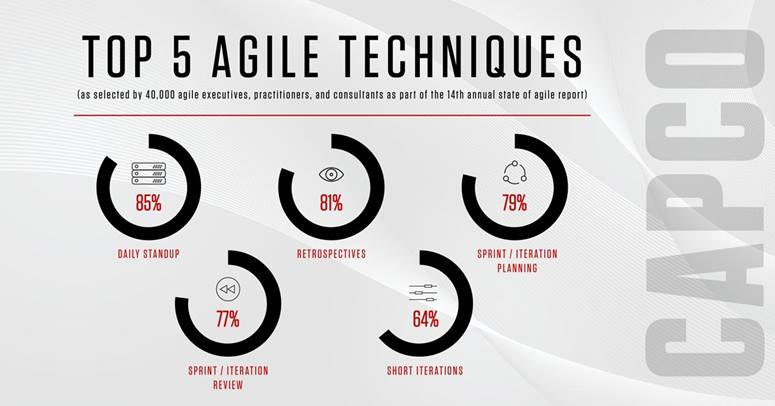COVID-19 has brought an unprecedented amount of change into our personal and work lives. Employees are dealing with the blending of their personal and professional lives. Parents now work full-time and double as teachers, significant others are working in tight quarters and people dealing with connectivity issues.
Businesses have a lot of questions that they are looking for answers too, including "How do I know if my teams are being productive? How do I reprioritize our change portfolio, given the uncertainty of our situation? How do I adjust my communication style to be more inclusive? How do we collaborate when we are not physically in the same space? Co-location was a core tenet of our agile transformation, what now? Are we behind, and we don't know yet?" These are a sample of some questions we have heard from our clients in recent weeks and months regarding ways of working, specifically for distributed teams.
For teams that were dependent on co-location as part of their daily approach, transitioning to a 'suddenly remote' model can bring a lot of questions and flip your team rituals on their head. What is the right approach for your distributed team? The short answer is, we don't know. There are too many nuances specific to your organization, team, and tools to have a one-size-fits-all answer to that question.
Using agile teams as an example, here's what we do know. Co-location was always 'a nice to have,' but never a need to have. According to the State of Agile Report, 78 percent of teams were already geographically distributed pre-COVID. Distributed agile can and has worked. We know this because we have done it.

While there are still more questions than answers about the future of work and the impact of COVID, we cannot wait for all of the answers to make decisions for our teams that help their productivity and connectivity. While various countries, regions, and organizations are looking at different timelines for a return to the office, we feel as though it will be quite some time before having full teams in the same location is an option.
In our experience, if even one person is not in the same room as the team, the work should be treated as if it is remote. If you haven't been the only person on a conference call while everyone else is in a meeting room, consider yourself lucky, as it is not an inclusive experience for collaboration and communication. We've all been working as remote teams for a few months; now that we're through the triage phase, we all have different experiences, both bumps and bruises.
It is a great time to do a retrospective with your teams on their experience to create an action plan. What are the things that are working? What are the things you need to fix or improve? A retrospective is one of the most critical agile ceremonies as it gives your team the ability to reflect and respond to the change around you. And when have we experienced more change than these past two months? Sadly, a big mistake teams make is overlooking or even worse, canceling the retrospective.
At Capco, we have been helping organizations with these retrospectives, and our early conversations across multiple clients have confirmed our initial theories. The reason companies emphasized the promotion of co-location in the first place had nothing to do with the location of your desk chair.
Instead, it had everything to do with the quality of your interactions with your team. With the right tools, procedures, behaviors, and leaders, your agile team can hit their stride in any location.
This topic is much bigger than just motivating your teams or buying them work from home equipment (both essential). We will also get a plug-in here to invest in your employee's mental health. Before you press forward any further with good intentions, take a breath and do the ceremony that will matter the most to what you do next.
Are you having trouble figuring out where to start? Reach out to Bryce VanDiver to learn more.